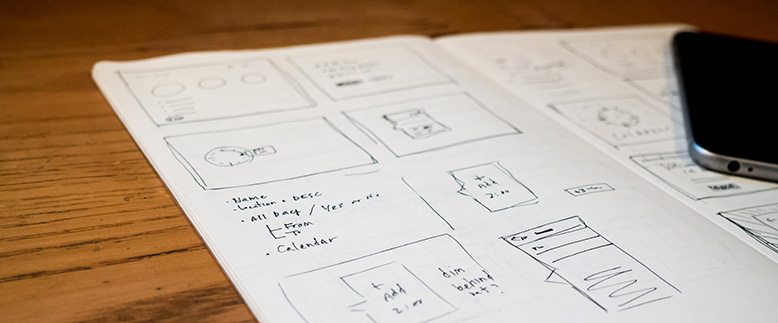User Experience – Designing for Trust
We’re all users. And the experience we have when we interact with products, devices, and screens plays a vital role in their success.
For me writing about User Experience is both exciting and slightly unnerving.
It’s exciting because, more than ever, the user experience process is critical to effective digital execution across the full gamut of devices and screens.
There’s also a growing expectation from clients to solve their marketing problems through design and user experience.
It’s slightly unnerving because although Friday is fast establishing a reputation as a specialist UX marketing agency, there are no definitive industry standards yet to which I can claim us to be experts.
The Apple Effect
In many ways, Apple has set the standard in user experience.
There is often debate around whether Apple’s business model is hardware or software but for me, their entire business centres around user experience.
From their products, software, their stores and their packaging – looking good and working well has helped to create an unrivalled trust and desire for their brand.
And it has propelled Apple’s rise to becoming one of the biggest companies in the world.

According to our analytics, there’s a 42% chance that you’re reading this post on an Apple device
Why is UX so important?
As an agency, much of our work history comes from designing and building websites and digital experiences for the screen.
While we have always been always passionate about user experience, in the past quite often things like costs, deadlines, and a lack of understanding client-side meant we often had to compromise on the UX process.
All projects should allow for at the very least a basic level of real-world user testing as part of the process. Although not ideal, where deadlines or budget does not allow us to follow a comprehensive process, we use our experience to validate planning and design decisions.
At our core, we want to deliver a usability that works for users and delivers on our clients’ marketing goals, that’s clear. But having a good user experience is no longer a choice: users demand it and the success of your business can hinge on it.
There is more to UX design than it generally sounding like a good idea and creating some wireframes. People are ‘cognitive misers‘ – they become accustomed to things working to the point that they don’t really need to think about it. Driving a car, riding a bike, and using a smartphone app or a website.
In the digital world, when standards have been set so high for technology and content; users, customers, and stakeholders expect that standard every day.
Take booking an airline flight. Whatever the airline, you have expectations that their website will load quickly, that it’s visual style, content and layout will look and feel right, and that you can easily find and book a flight destination without too much effort.
And provided the price is right a not unreasonable expectation. Right?
But it’s when something goes wrong with the experience, trust breaks down (or is never established). We have all been there and been frustrated by it. Slow to load, poor navigation, errors… grrr!
Our expectations are set high and when they’re not met, we can take ourselves elsewhere in a matter of seconds.
The UX Process
“People’s behaviour makes sense if you think about it in terms of their goals, needs, and motives.”
—Thomas Mann
This is not a post detailing UX process (this will follow soon) but a brief look at key steps in a typical design project that are used to deliver a successful user experience. It is important that clients not only understand the process but then play an active part in it and sign off at each stage.
The following details the process that Friday uses to deliver a digital solution: for example a website, or a smartphone app.
- Planning & Strategy
Planning is key and provides the rationale for the approach taken throughout the rest of the process. It will include a series of workshops to understand business requirements, user and technology needs. This stage can include a range of steps including research, user surveys, focus groups, mood boards, analytics, content review & competitive analysis. - Wireframing
Visual work starts by taking the planning output and using information architecture, sketches to build wireframe layouts. In some cases, user testing can start here by creating interactive high-level UX prototypes. - Design
At the design stage artwork is created for all key users scenarios in all relevant placements, devices or screens. - Build
During the build stage, a beta or prototype is developed based on the visuals and functionality of the design. - QA
When the build process is complete, the project moves to quality assurance and testing where it is tested to ensure it’s visual is sound and it works as planned. User testing will often occur here. - Feedback / UAT
Before launch, the project is opened up to the client for user acceptance testing where it is again tested and any issues addressed before release.
Trust
As users, the trust we have in our ability to use something has a critical role in whether or not we make a decision to continue using it, engage or buy it.
Trust must be established quickly, or users will quickly abandon your product, service or content. As businesses, it’s important to understand trust and the role trustworthiness plays in user experience and particularly when it comes to conversion rates.
And we’ve seen a clear shift in the demand for UX planning and design from clients as they now understand it’s advantage and it’s value.


